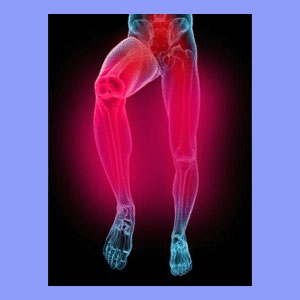
Combined care for sciatica describes a therapy approach using multiple treatment methods concurrently in an effort to markedly decrease pain. A combined approach can be a boon or a hindrance to effectual care, depending of many factors, including the diagnosis, the types of treatments utilized, the intent of the caregivers and the goals of the patient.
Combined care is a relatively new concept in modern medicine. The idea is to use a wide range of complementary therapeutic practices to treat the patient all at once. This concept goes against the traditional medical approach of exhausting one avenue of care before moving on the try something different.
Combined care practices have evolved quickly due to the greater acceptance of alternative and complementary medical services by the traditional conventional medical sector. Basically, medical doctors now commonly work hand-in-hand with chiropractors, massage therapists, physical therapists, reiki practitioners, acupuncturists, hypnotherapists, pain coaches and psychologists, as well as with other physicians.
This dialog examines the combined care industry as it is used to treat sciatica sufferers. We will profile the types of treatments used, the effectiveness for common sciatic nerve diagnoses and the problems often experienced by patients who pay to receive these diverse health services.
Combined Care for Sciatica Diagnosis
The most often experienced problem among sciatica sufferers is achieving an accurate diagnosis. Virtually every patient has been told that their pain is a result of (insert diagnosis here), yet treatments fail to bring about relief of said causation. This should be no surprise, since the symptoms rarely correlate to the diagnosis, usually illogically linking the pain to the incidental structural changes often discovered during diagnostic testing. Once combined care for sciatica begins, all the therapies will go about trying to treat the specific diagnosis applied to the patient. If this diagnosis is not sound, then these assorted treatments will obviously not provide satisfying results.
Typically, the lead caregiver, often a chiropractor or medical doctor, will be wholly responsible for diagnosing the patient. Then, all other caregivers will simply provide treatment towards the proposed diagnosis. In some cases, other care providers might also contribute to an ever-evolving diagnostic verdict, since they will likely revise their thoughts on the pain depending on how the patient responds to treatment.
As long as the other health service providers all have voices in the diagnostic revision process, results are likely to improve. However, when each caregiver does not influence the diagnostic verdict in any way, but merely provides care for a predetermined diagnosis made by another doctor or chiropractor, results are typically horrifically disappointing.
Combined Care Treatment
Treatments used in combined care range greatly and depend on the services provided by a particular healthcare office or group. Many combined care practices are housed in a single facility, making it super simple for patients to receive treatment from all providers under one roof. Other times, especially in smaller medical markets, the patient might have to see each provider in their own office space, making the investment of time and effort significantly greater than single facility practices.
Some of the major medical focuses often included in combined care are neurology, orthopedics, pain management, physical therapy and rheumatology.
Some of the major alternative and complementary types of care available may include chiropractic, a multitude of massage styles, trigger point techniques, acupuncture and acupressure, TCM, ayurvedic healing, shamanism, reiki, prolotherapy, hydro and aquatherapy, ultrasound therapy, magnet therapy, homeopathy, nutritional therapy and posture therapy.
Mindbody work is also sometimes included in the mix of the best combined care practices, including counseling, pain coaching and psychology.
Combined Care for Sciatica Benefits and Problems
Combined care can be wonderful when all the team members support one another and work diligently to collectively diagnose and treat the patient successfully. In single facility combined care practices, patients might benefit from the synergy offered by a group of doctors and therapists and are often encouraged to explore what works best for their individual pain needs.
Combined care is also one of the most greedily exploited of all healthcare concepts, with many practices evolving into patient mills that are set up exclusively to make money. These offices usually do not last long, as results typically disappoint patients and the common billing practices used will often lead to insurance or workers compensation fraud charges being filed against the practice.
We write in great detail about combined care practices elsewhere on the sites of The Cure Back Pain Network and encourage you to read all of our experiences dealing with an exhaustive range of combined practice types.
Combined Care for Sciatica Advisory
It is vital to understand that true sciatica is caused by a nerve problem that exists in the lower spine. Most complementary practices can not resolve these issues structurally, so in these cases, the treatments will only qualify to be called symptomatic care, instead of curative care. Put simply, the patient might receive some measure of temporary relief, but the underlying cause of pain will not be resolved through treatment.
There are exceptions to this rule, including many disc-related pain syndromes that respond well (often even better) to nonsurgical conservative care than to invasive spinal procedures. However, some types of true spinally-motivated sciatica will have to receive surgical treatment, if the diagnosis is correct and the patient desires a lasting cure, instead of an ongoing coping mechanism.
Now, for the vast majority of patients, these rules do not even apply, since most people suffer from pseudo-sciatica, which involves identical pain patterns, but non-lumbar, and possibly nonspinal, causation. It is well known that pseudo-sciatica responds much better to various types of conservative care, which is why so many healing regimens are successfully used to treat this painful syndrome.
For more information on using a combined care sciatica treatment approach, contact your doctor and ask for a referral to a quality multidisciplinary practice near you. Just be sure to do your research on the diagnosis and treatments suggested. It is of paramount importance that you stay active in your own care and this means continuously evaluating the efficacy of the care and making necessary changes to better your results.





